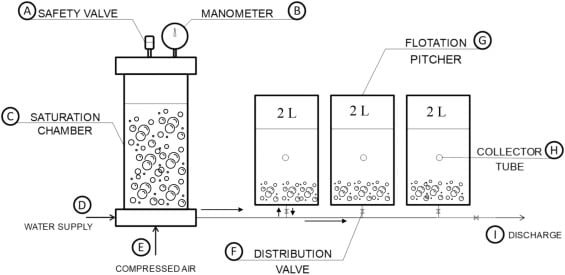One of the main disadvantages in biofloc systems is the addition of external sources of carbon, which results in additional costs, requires more labor, and increases total suspended solids in the system.
The biofloc system without the addition of carbon is compatible with many economic, technical, and environmental objectives. The strategy of not adding carbon could be achieved by manipulating the C/N ratio of the diet, as different approaches could be adopted.
Increasing C/N could take place by reducing the protein content in the diet, which ensures lower costs and lower ammonia/nitrogen excretion, providing carbohydrate-rich foods or raising the lipid level.
Researchers from Cairo University and the National Institute of Oceanography and Fisheries (NIOF) established a carbon-free biofloc strategy by decreasing the protein in the diet, parallel with increasing the lipids in the diet, to evaluate their effects on the growth, water quality, and health status of Nile tilapia.
They conducted a 70-day experiment to evaluate the operation of a biofloc system without adding carbon by manipulating the levels of protein and lipids in the tilapia diet.
Main results
“The control treatment recorded the highest values in terms of final body weight, specific growth rate, floc volume, total suspended solids, and ammonia nitrogen,” they report.
However, they found no significant differences between the control treatment and the low protein-high lipid treatment with respect to final body weight and protein efficiency rate.
According to the researchers, designing specific diets for biofloc systems avoids the addition of external sources of carbon without affecting fish growth and health status, which could save labor needs and minimize environmental impacts, thus avoiding complex processes to stabilize the system.
Stay Always Informed
Join our communities to instantly receive the most important news, reports, and analysis from the aquaculture industry.
“The strategy of not adding carbohydrates in the presence of a high lipid-low protein diet (23%) achieved a final body weight (FBW) and protein efficiency rate (PER) close to the control fed with a high protein diet,” they highlight.
However, the control treatment showed the best performance in growth and feed utilization compared to the evaluated treatments.
On the other hand, the researchers report that liver sections of fish fed with low protein and high lipid content showed the best values for the histological alteration index compared to fish in the control treatment.
The carbon-free biofloc strategy could have the advantage of reducing the amount of energy needed to maintain the required oxygen level for tilapia. Additionally, this strategy was an effective method for increasing nitrification and controlling NO2 in biofloc systems.
Conclusions
“It can be concluded that increasing lipids in the diet may facilitate the use of low protein diets for tilapia cultivation under biofloc conditions and achieve growth close to that of a high protein diet,” the researchers conclude.
Likewise, they describe that carbon excreted from undigested fats in a high-fat diet could act as internal sources of carbon that activate bacterial growth and subsequently maintain water quality under biofloc system conditions.
The researchers recommend conducting more studies to examine the effect of long-term exposure to low protein diets with different levels of lipids on the growth performance of tilapia raised in carbon-free biofloc systems.
Contact
Rania S. Mabroke
Fish Nutrition Laboratory (FNL)
Animal Production Department
Faculty of Agriculture, Cairo University
Giza, 12613, Egypt.
Email: rania.ahmed@agr.cu.edu.eg
Reference (open access)
Suloma, A., Mabroke, R. S., Khattab, M. S., Salaah, S., El-Husseiny, O. M., & Eid, A. (2023). A step toward a biofloc system with no-carbon addition: Increasing dietary lipid level enhances the water quality and body chemical composition without affecting tilapia health status. Journal of the World Aquaculture Society, 1– 21. https://doi.org/10.1111/jwas.12980
Editor at the digital magazine AquaHoy. He holds a degree in Aquaculture Biology from the National University of Santa (UNS) and a Master’s degree in Science and Innovation Management from the Polytechnic University of Valencia, with postgraduate diplomas in Business Innovation and Innovation Management. He possesses extensive experience in the aquaculture and fisheries sector, having led the Fisheries Innovation Unit of the National Program for Innovation in Fisheries and Aquaculture (PNIPA). He has served as a senior consultant in technology watch, an innovation project formulator and advisor, and a lecturer at UNS. He is a member of the Peruvian College of Biologists and was recognized by the World Aquaculture Society (WAS) in 2016 for his contribution to aquaculture.




